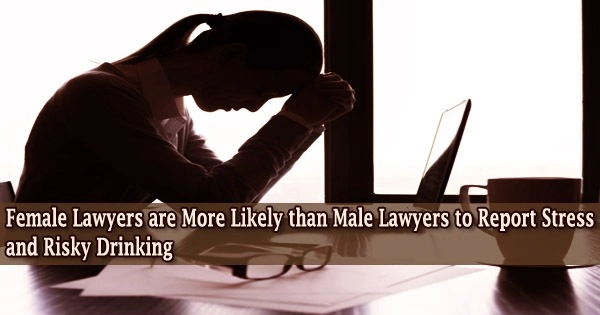According to a study by Justin Anker from the University of Minnesota Medical School and Patrick Krill from Krill Strategies LLC, USA, published May 12, 2021, in the open-access journal PLOS ONE, work-related factors have different effects on lawyers’ high rates of stress, risky drinking, and attrition depending on their gender.
According to recent national estimates, there are notably high rates of substance abuse, depression, and anxiety among lawyers, as well as significant attrition rates, particularly among women.
In order to learn more about work-related factors that may be predictive of stress (owing to its linkages with depression and anxiety as both a cause and a consequence), alcohol usage, and attrition among lawyers, Anker and Krill questioned members of the California Lawyers Association and the D.C. Bar.
The poll was completed by 2,863 men and women who are now employed in the legal profession. It was randomly distributed to 80,000 people in the participating bar associations, with women making up roughly 51% of the final sample.
Overall, the findings revealed differences between men and women in terms of the frequency of these issues (stress, substance abuse, and attrition), as well as the extent to which employment characteristics influenced the issues.
Nearly 25% of the sample reported working an average of over 51 hours per week, and 67% said they worked more than 40 hours a week. Lawyers who were younger had a 2-4 times higher likelihood of reporting moderate or high stress than their older counterparts.
These illuminating findings reveal troubling levels of distress within the legal profession, most notably for women, but they also provide vitally important trail markers for the path to improvement. It is our hope that the profession will now follow that path.
Patrick Krill
Both men and women had a connection between high work over commitment and stress, although the female gender had a stronger connection. Despite the fact that just 2% of respondents reported having an alcohol use disorder, 30% of respondents tested positive for high-risk hazardous drinking. In addition, significantly more women than males (56 percent vs. 46 percent) engaged in risky drinking and high-risk/hazardous drinking (34 percent vs. 25 percent).
Finally, due to mental health issues, burnout, or stress, more women than men (24 percent vs. 17 percent) considered leaving the legal profession, and the determinants of this response were different for men and women.
Men with strong work over commitment were more than twice as likely to consider leaving, while women with a high work-family conflict score were 4.5 times more likely to leave or even consider it.
However, there was no correlation between these two measures for women. It is interesting to note that males who scored highly on the perceived likelihood of promotion scale were 2.5 times less likely to consider quitting.
The authors point out that even though they made an effort to consider how the COVID-19 pandemic might have affected their respondents both within the survey and in their overall results, there are probably still unaccounted-for effects of the pandemic present. Their survey was conducted during the COVID-19 pandemic.
They also point out that although respondents’ willingness to seek assistance was not a question in their survey, the findings nevertheless make it abundantly evident that gender inequality, alcoholism, and mental health issues are serious issues in the legal industry.
Krill adds: “These illuminating findings reveal troubling levels of distress within the legal profession, most notably for women, but they also provide vitally important trail markers for the path to improvement. It is our hope that the profession will now follow that path.”
















